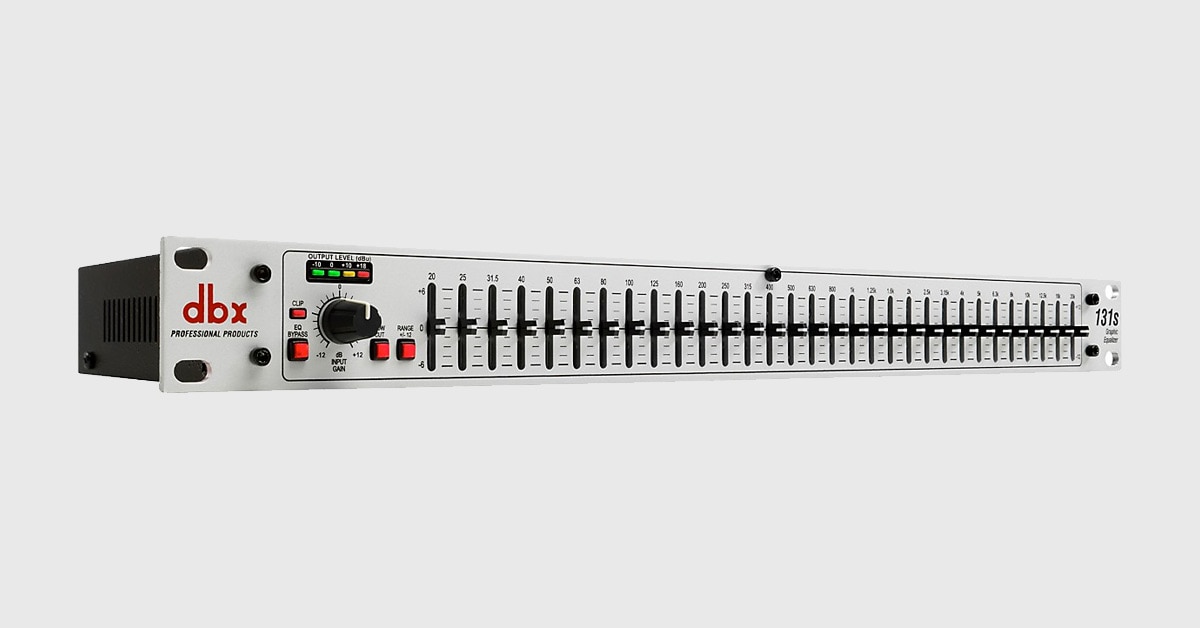Learn how audio equalizers work and the differences between graphic and parametric equalization.
Equalizers boost or cut specific frequencies in an audio signal. The most common and simple equalizers are the tone controls found in consumer audio electronics, guitars and basses, and instrument amplifiers. They help shape the sound to suit the music, listening environment, and your personal preferences. The simplest equalizers have just two frequency bands that control bass and treble frequencies. Three-band equalizers add a midrange control.
Bass and treble knobs usually employ low-pass shelving and high-pass shelving filters respectively. These filters simply increase or reduce gain in one frequency range while leaving the rest of the sound spectrum unchanged. In the realm of equalization, they offer relatively coarse adjustments and are unsuitable for tone shaping onstage or in the studio.
Many instrument amplifiers have a “presence” knob that boosts the mid to high frequencies. This control is supposed to make your instrument sound like it is actually in the room on recordings. It also helps an instrument slice through a dense mix. However, presence controls are fairly crude and can’t provide the fine-tuned frequency response of a graphic or parametric equalizer, the devices we’ll discuss next.
Graphic equalizers provide more flexibility and control than simple two- or three-band tone controls, and they're quite easy to use. A graphic equalizer is a set of band-pass filters that divide the audio spectrum into 30 or more bands allowing you to control the amount of boost or cut in much narrower frequency ranges. Usually controlled with sliders, the effect of the equalizer is graphically depicted by the positions of the sliders—that's why it's called a “graphic” equalizer. The ease of use offered by graphic equalizers is largely due to this ability to easily visualize how equalization is affecting the overall audio signal.

The rackmounted dbx 131s Single Channel 31-band Graphic Equalizer is a low-cost, intuitive tool for shaping your sound onstage or in the studio.
Graphic EQs are great for sound reinforcement and “tuning” rooms—adjusting the contour of your sound to match the environment. For example, if you’re performing in a space that produces a lot of boominess, you can cut the lower frequencies that are contributing to the problem. Graphic equalizers allow you to produce a consistent sound at every venue.
Today you’ll find graphic equalizers in all kinds of formats ranging from rack-mounted hardware units to software-based programs and apps that digitally equalize your signal. For instruments, dedicated stomp-box equalizers allow on-the-fly tone control so you can seamlessly shift between rhythm and solo sounds without touching your amp. Many guitar and bass multi-effects processors also include EQ functions.
Parametric equalizers give you the most flexibility in sound shaping, but are more challenging to use. Unlike graphic EQs that only let you set the amount of boost and cut, parametric EQs allow you to set the gain, center frequency, and the bandwidth of a given frequency. The range of the bandwidth is referred to as the Q factor. Parametric equalization controls the relative cut or boost of the signal above and below the center frequency. With practice, parametric equalizers are powerful and flexible tools for helping specific instruments or voices to cut through the overall mix, or to generate a big, full sound.

The Behringer FBQ2496 Feedback Destroyer Pro automates the process of identifying and eliminating feedback-producing frequencies while leaving your sound otherwise intact.
Parametric EQs can eliminate feedback by using a lot of cut (also called a notch filter) positioned precisely at the frequency that is feeding back. You might be able to control feedback with a graphic EQ, but if the feedback-producing source is wide, you'll be cutting more of the sounds than you wanted. Parametric equalization lets you fine-tune the cut, so you don't lose the good stuff.
Semi-parametric equalizers do not allow adjustment of bandwidths—they’re fixed by the unit’s circuit design. They trade off somewhat easier operation with reduced functionality.







































































































































